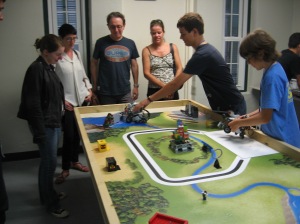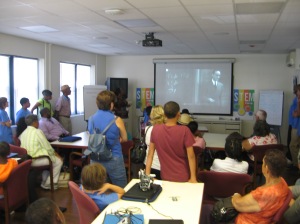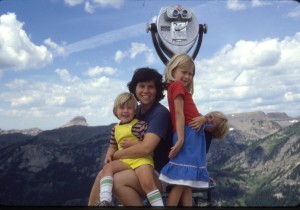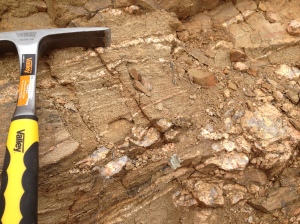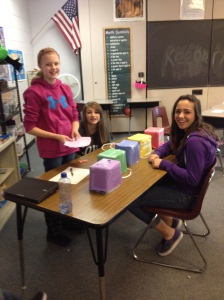(If you’re looking for the Belco STEM camp lesson web site, click here)
I think the Ascendant Group / Belco STEM camp for kids was a smashing success and started some conversations that we’re very motivated to continue. Today was the final day of STEM camp for the week 1 campers. Anastasia, Jocene, and Diane put together a little showcase and invited parents, Belco executives, the Ministry of Education, and the community to come and talk to the kids about their learning. We were very pleased with the turnout and the enthusiasm at the STEM show.
First, Anastasia grouped the kids and assigned the groups to a station. One group got to demo the Green City challenge, two other groups demonstrated robots, one group had an Energy station, and another group had a Web Design station. Parents and supporters circulated around the stations for 45 minutes or so and asked the kids questions, which they answered excitedly. The kids could talk forever about their week at STEM camp.
What I found fascinating is how in tune the Bermudian kids are with their own geography. They had some misconceptions about the advantages and disadvantages of certain forms of power generation – but they understood well the limitations of where they live. Bermuda is on a seamount such that the land is slightly above sea level, a reef area surrounds the islands, and then it drops steeply into the ocean for thousands of feet. There are two other seamounts a few dozen miles away but then nothing else for hundreds of miles, until you get to North Carolina. They could converse easily about the challenges of living here – having to import almost everything they need, including all fossil fuels – the importance of the tourism industry – the fragility of their reef ecosystem – the calm weather with occasional storms – the historical disappearance of native flora and fauna – the smallness and isolation of it all. I wondered if kids in Colorado could tell you as much detail about our own geography, and I doubted it.
Next, we had a little graduation ceremony. Anastasia and I each gave a speech about the creative problem-solving the students did over the week. I talked about how real-world problem solving skills can’t be found in a textbook, and that students did important work when it came to teamwork, communication, analyzing tradeoffs, and doing research. I complimented the students on a wonderful week. We asked “wouldn’t it be great if school were like this all the time? This is what a STEM education is about. It is learning real-world problem solving by doing real-world problem solving.” I also brought up FIRST Lego League, and I offered to collect contact information and help interested parents start a team or two. I got some e-mail addresses and will follow up when I am home.
Anastasia showed a video about problem-based learning and explained her philosophy of teaching in an inquiry-based manner. She summarized some research about creativity and its importance to learning, and how important creativity is for adolescent development especially.
We handed out awards – certificates of completion, and some awards of excellence for particular achievements in robotics, energy, and web design. One of the Belco engineers, Don, had some “trophies” printed up on a 3D printer, and they were a big hit.
We mingled, cleaned up a bit, and then ended the camp. I had a good conversation with Dr. Radell Tankard from the Bermuda Ministry of Education. STEM education is of high interest to the Ministry. He asked in particular how becoming a STEM school had affected student behavior concerns. I told him that our data showed office referrals and discipline problems in general were way down, and we had data showing this was so. I cautioned that we had put a lot of other systems in place over the last few years, and that our discipline data couldn’t be isolated to STEM education. However, I told him that anecdotally, the kids had fewer behavior problems when they were engaged and invested in learning during class time, and adopting the STEM philosophy really had improved student engagement. We exchanged contact information – he wants more information!
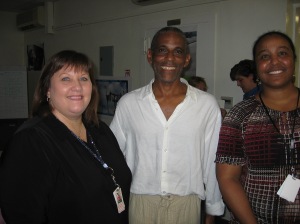
Diane McCallum, who handled the STEM camp’s logistics beautifully, Dr. Tankard, from the Ministry of Education, and the very talented Anastasia Smith, camp director.
I loved working with Anastasia. She truly enjoys working with adolescents, and she’s very comfortable and at-home in the world of problem-based and project-based learning. She came up with terrific lessons and learning experiences that fit the educational goals nicely. She trusted the students to be thinkers, and they were. She works in North Carolina as a high school science teacher but is spending the summer in Bermuda. It’s a shame she is normally so far away. I would enjoy working with her and hanging out with her.
I feel really privileged to have been here for this experience. I’m excited to see where it leads and the conversations that are going to continue. I know we’ll keep in touch with the community at Belco and the Bermudian Ministry of Education, and learn from each other the best way to engage students and invest in their future.


